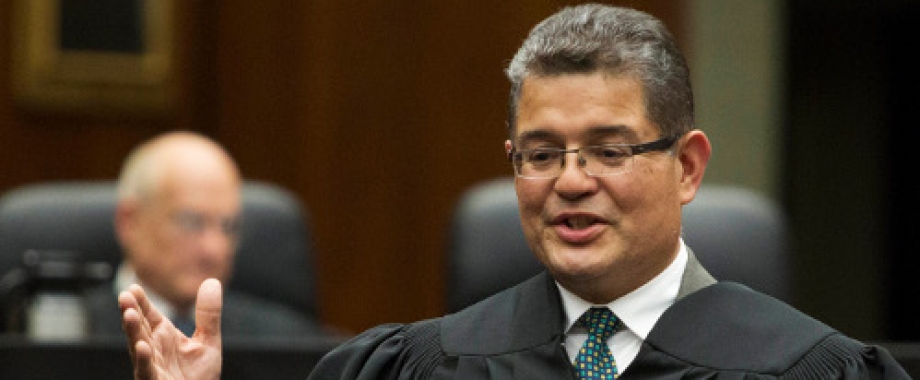
The chief judge of U.S. District Court in Chicago has questioned whether the federal government in a drug case racially profiled African-Americans and Latinos — raising a sensitive issue that has arisen in various forms nationwide for years.
Judge Ruben Castillo wrote in a decision posted late Wednesday that since 2011, 19 African-Americans and seven Latinos have been charged in drug stings in the Chicago area, in which agents used an informant to talk suspects into robbing a fake stash house. Over the same period, no whites have been charged, he wrote, citing defense filings.
The decision has potential to reach beyond Chicago. Law enforcement in other metropolitan areas has been accused of racial profiling, and similar stings are done nationwide.
Castillo says there’s a “strong showing of potential bias” and ordered the government to turn over the name and race of each defendant in such cases brought by federal prosecutors in the Chicago area since 2006.
On Thursday, one defense attorney in the case welcomed the ruling as “potentially groundbreaking.”
“It is groundbreaking if, in the end, the court recognizes that these prosecutions are tinged with a racial animus,” said Michael James Falconer, who represents one of five defendants in the case. “With this ruling, Castillo has already gone further than I could have hoped for.”
A spokesman for the U.S. Attorney’s Office in Chicago, Randall Samborn, declined any comment on the ruling.
Last month, Castillo became the first Hispanic chief judge for the northern Illinois district. He told The Associated Press then that one of his priorities was to ensure diversity issues were looked at more closely at the courthouse.
In the Chicago case, five men were charged after an undercover agent told them he knew of a house where Mexican cartel operatives kept stashes of cocaine with a street value in the tens of thousands of dollars. They were arrested as they prepared to storm the house.
Castillo in his ruling asks for the instructions that prosecutors and the Bureau of Alcohol, Tobacco and Firearms provide to employees on how to avoid profiling based on race.
Attorneys for a defendant in the case, Abraham Brown, have sharply criticized the practice of using fake stash houses.
“The informant and agent search for their prey — someone whom they can convince to act on their phony plan,” their motion, filed in June, says. Numbers indicating most targets are black, it adds, “presents a stark discriminatory picture.”
In their reply, prosecutors said there was no evidence that’s true. To show any such bias, the government argued the defense had to show that non-minorities with criminal histories who were potential sting targets “were not further investigated or prosecuted because of their race.”
Steve Greenberg, a Chicago defense attorney unconnected to the case in Castillo’s ruling, said it was rare for a judge to even broach the issue of prosecutors’ impartiality.
“And for a judge to question prosecutors’ decisions on racial grounds — I’ve never seen that before,” Greenberg said. “He’s not saying they are doing it— racial profiling — but he is saying, ‘I have seen enough to make me wonder if there is something here.'”
The judge gave the government until Aug. 23 to turn over the asked-for data. If he eventually decides racial profiling was involved, he could dismiss all charges against the five defendants, Falconer said.
It’s not the first time that Castillo, a former civil rights attorney, has raised questions about race and the law.
In 2000, in approving a settlement involving accusations that a suburban village engaged in racial profiling, Castillo wrote that the phenomenon was a “deadly cancer on our justice system.”
The question regarding the fairness of stash-house stings has arisen before in this district, court filings show.
Last year, the 7th U.S. Circuit Court of Appeals in Chicago found such stings were acceptable. But in a partial dissent, Judge Richard Posner wrote there is a greater risk of illegally entrapping suspects because of promise of hundreds of thousands in drug money dangled before targets.
“Most robberies, even bank robberies, net little money for the robber,” he wrote. “But a stash house is a potential goldmine.” He added that such stings are “a disreputable tactic.”


